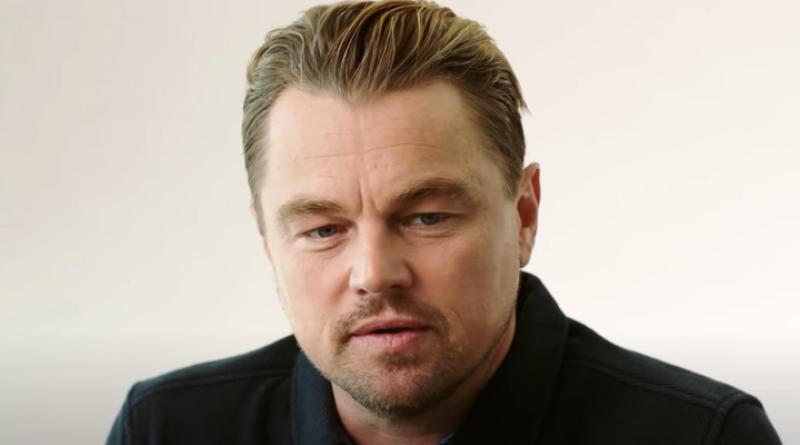Leonardo DiCaprio puts a nine-year ‘ticking clock’ on climate crisis – is he right?

The actor and environmentalist highlighted the importance of keeping global heating to 1.5 degrees Celsius
Leonardo DiCaprio has a warning for humanity, not unlike his scientist character in the Netflix film Don’t Look Up: something dangerous is hurtling imminently towards us, and we don’t have much time left to change things.
However instead of the film’s massive comet, it’s the climate crisis he wants us to pay attention to in the real world.
“I’ve had two great passions in my life. That has been acting, and the protection of the natural world and getting the message out about the climate crisis,” the Oscar winner told Deadline this week.
“I think there’s a worldwide sense of anxiety about the fact that the powers that be, the private sector, governments, are not making the transition fast enough. We literally have a nine-year window.”
It’s not the first time DiCaprio has spoken about the dire state of the climate. The actor is a United Nations climate ambassador and philanthropist who has spent tens of millions of dollars on environmental protections. (Though critics would note he also loves flying in private jets and partying on gas-guzzling mega-yachts.)
“Climate change is real, it is happening right now,” he told a global audience during his 2016 Oscars acceptance speech for Best Actor in The Revenant. “It is the most urgent threat facing our entire species and we need to work collectively together and stop procrastinating.”
Don’t Look Up, a thinly-veiled climate allegory with a single-week record of 152 million viewing hours on Netflix, has also provided the actor with a platform to advocate for global climate action.
DiCaprio warned this week of the serious global heating impacts beyond 1.5 degrees Celsius, the most ambitious temperature threshold outlined in the 2015 Paris Agreement among all nations.
“If we reach this 1.5-degree threshold, where we hit that certain point in nature, there’s all kinds of lightning-rod points with methane and the tundra and warming of our oceans, the acidification of our oceans,” he told Deadline.
He argued that the US has a special obligation to lead on climate because Americans are both disproportionately rich and disproportionately big polluters.
Does Leo have a point? Are we really screwed unless everything changes in nine years? We decided to ask some climate experts.
First things first, the 1.Celsius (C) bit. That number comes from the Paris deal and represents the aspirational target of the global agreement which seeks to hold warming below 2C.
Estimates vary, but the scientists of the United Nation’s Intergovernmental Panel on Climate Change, the world’s foremost authority on the crisis, suggest we could hit 1.5 C by the early 2030s.The World Meteorological Organization also found that there’s a 40 per cent chance of hitting the threshold within the next five years.
Even if the average global temperature is held to around 1.5C (above preindustrial times), humanity will continue to experience severe impacts including deadly heatwaves, flash floods and more powerful hurricanes.
“With every additional increment of global warming, changes in extremes continue to become larger,” the IPCC stated last year.
It’s just a matter of severity. At 2C, there is the threat of twice the sea-level rise compared to at 1.5C, and three times as many people around the world facing severe heatwaves.
These climate benchmarks are important but shouldn’t obscure the fact that the crisis is already well underway, says Kristie Ebi, a professor of global health at the University of Washington who studies climate impacts.
“We’re already on track. We’re already seeing far too many people suffer and die in heat waves,” she told The Independent, recounting the horrors of 2021’s brutal “heat dome” in the Pacific Northwest which killed an estimated 600 people and more than 1 billion marine animals.
The oppressive heatwave caused a 69-fold increase in people seeking hospital care, she said, as well as crop failure and the decimation of coastal shellfish populations important to Native American tribes in the region.
Each incremental increase in climate change will cause further harm, she says, and it’s important to remember that they will not be shared equally. The most vulnerable will be hit the hardest.
“The Earth is going to be fine,” she said. “The question is what’s going to happen to us. The Earth will pull through and eventually ecosystems will evolve into different kinds of ecosystems. It’s really what we are doing to ourselves.”
Noah Diffenbaugh, a professor of Earth system science at Stanford University, agrees. People need only to look at decreasing snowpacks, unprecedented weather events, and numerous other signs to see the climate crisis affecting them now - not in nine years.
The Earth is a dynamic system, he says. Global climate policy, climate change, and its impacts interact with each other elliptically. Further, climate features like permafrost, polar ice sheets, and snow melt have non-linear properties. In other words, once pushed to certain tipping points, they will start producing exponentially more dangerous climate impacts in a negative feedback loop.
“The question of how much time do we have is really a question of how do we supply the global energy needs for the world population, for the energy that’s necessary for wellbeing, while reducing emissions and reaching net zero, while also adapting to the climate change that’s already happened and the further climate change that will happen along the way,” he says.
“Each one of those is a grand challenge in and of itself. Doing all three simultaneously is what is required to manage the accelerating risks of global warming.”
Hard lines and targets matter less than doing everything in our power to become more sustainable, as soon as possible.
“There are no bright lines in terms of global temperature,” he said. “Even if we hold warming to 1.5 or 2C, that’s more than we already have. That’s more climate change, and we can expect more impacts than we already have, which highlights the role of both mitigation and adaptation.”
Trying to communicate the complexity of this can be a challenge, he added, and he empathized with DiCaprio’s character, Dr Randall Mindy, in Don’t Look Up.
“I recognize a lot of the challenges in communicating both what is understood and what is uncertain,” Diffenbaugh said.
But no matter if you’re a climate researcher or a world-famous actor, the science is clear. We need to act now. We don’t have nine years to waste.





